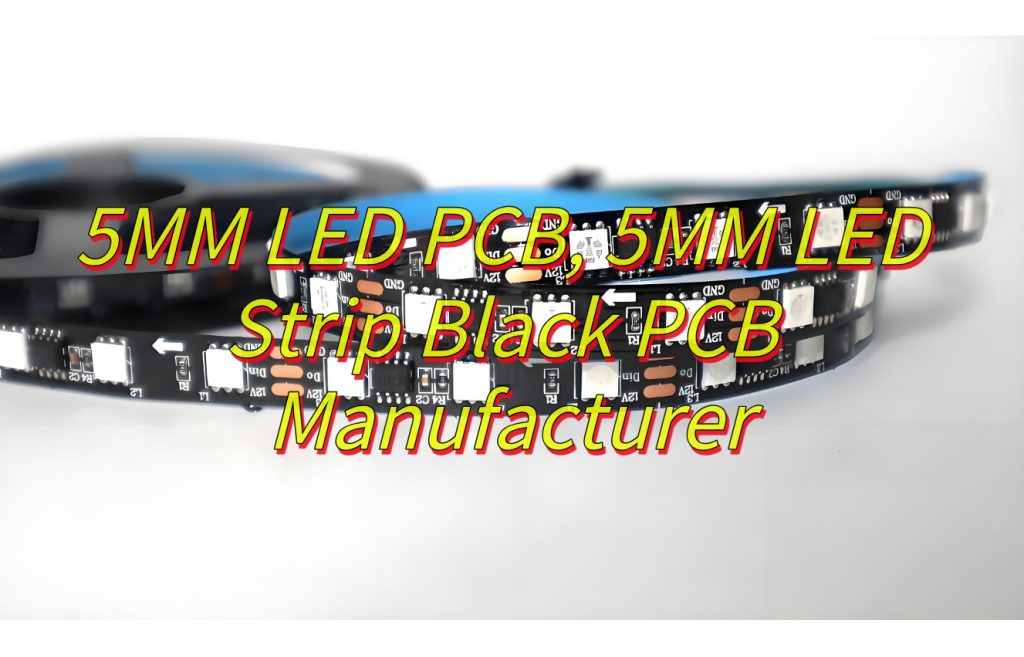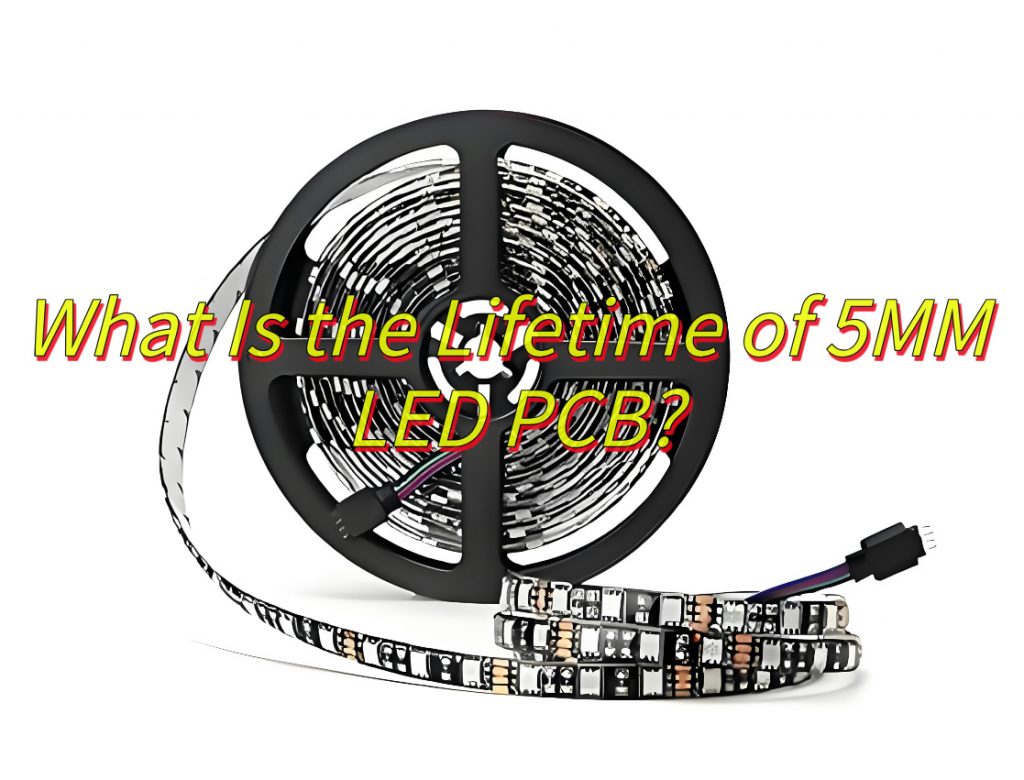Looking to enhance your lighting designs with 5mm LED PCB? Explores everything from footprint design and manufacturer selection to cost optimization.
Best Technology excels in 5mm LED PCB manufacturing, delivering unmatched speed and precision for lighting projects globally. Beyond standard 5mm LED PCBs, our diversified product line includes â16mm PCB green LEDâ modules for high-intensity applications, ultra-slim â4mm PCB LED stripsâ for space-constrained designs, and versatile â8mm PCB LED stripsâ optimized for brightness and durability. Whether you seek bulk orders or âPCB parts on demand (5mm LED)â, our flexible manufacturing scales effortlessly to meet your requirements. Our optimized production system guarantees â24-hour prototype turnaroundâ â submit designs by 9 AM, receive functional 5mm LED strip black PCB samples next business day. We maintain â30% faster lead timesâ than industry averages through automated SMT lines processing 15,000 components/hour, ideal for urgent orders. Cost efficiency meets quality with â15-20% competitive pricingâ via material consolidation â we utilize bulk-procured FR4 substrates and 99.9% pure copper layers while adhering to IPC-A-610 Class 2 standards. Advanced AOI systems and thermal cycling tests (-40°C to +105°C) ensure 99.2% first-pass yield rates across 5mm LED PCB batches. Welcome to contact us if you have any request for LED PCB: sales@bestpcbs.com.
What Is 5MM LED PCB?
A 5mm LED PCB refers to a printed circuit board designed to accommodate 5mm-diameter light-emitting diodes (LEDs), commonly used in applications like decorative lighting and automotive auxiliary systems. These PCBs often utilize aluminum-based substrates, such as FR4 or metal-core materials, to manage heat generated by the LEDs, ensuring stable performance even during prolonged use. The design incorporates conductive traces and insulating layers to electrically connect multiple LEDs while maintaining isolation between components. For example, black solder mask variants of these PCBs are popular in LED strips for architectural lighting due to their ability to blend seamlessly into dark environments. The compact footprint of 5MM LED PCBs allows dense arrangements in tight spaces, making them suitable for flexible installations like curved signage or wearable tech. Thermal management remains a priority, with aluminum cores dissipating heat more effectively than standard fiberglass boards, which helps extend the operational lifespan of the LEDs.

What Is the Lifetime of 5MM LED PCB?
The typical lifetime of a 5mm LED PCB ranges between 30,000 and 50,000 hours under standard operating conditions. This duration depends on factors like material quality, thermal management, and environmental stress. Aluminum-core 5MM LED PCBs often outperform fiberglass variants in longevity because their metal substrates efficiently dissipate heat, reducing LED junction temperature and slowing lumen depreciation. For example, a 5MM LED PCB used in automotive interior lighting with controlled current and ambient temperatures below 60°C may maintain 70% brightness output beyond 40,000 hours. Proper solder joint reliability and conformal coatings further enhance durability in humid or vibration-prone settings. Manufacturers using copper weights above 1oz and oxidation-resistant finishes typically report lower failure rates in 5MM LED PCB batches over extended duty cycles.

What Is the Current Limit for 5MM LED PCB?
The current limit for a 5MM LED PCB typically ranges between 15mA and 30mA per LED, depending on the LED specifications and PCB design. Standard 5mm LEDs operate optimally at 20mA, but aluminum-core 5MM LED PCBs may handle slightly higher currents due to improved heat dissipation. For example, a 10-LED array on a 1oz copper PCB with proper trace widths can safely run at 200mA total when spaced 25mm apart to prevent thermal buildup.
Current limits are influenced by PCB material thickness, trace width, and ambient temperature. A 5MM LED PCB with 2oz copper and 1.6mm substrate thickness might support 25mA per LED in a 40°C environment, while thin FR4 boards may require derating to 18mA at 50°C. Designers often include current-limiting resistors or constant-current drivers to prevent overloading. In automotive applications, 5MM LED PCBs with fused traces are common to manage voltage fluctuations and ensure stable operation within safe current thresholds.
How to Design 5MM LED PCB Footprint?
Here are steps about how to design 5mm LED PCB footprint:
1. Define Component Specifications
- Confirm the exact dimensions of the 5mm LED (e.g., diameter, lead spacing, and optical characteristics).
- Check the datasheet for recommended land pattern dimensions, typically including pad diameter (2.0â2.5mm), solder mask clearance, and thermal relief requirements.
2. PCB Layout Basics
- Placement: Position LEDs uniformly to avoid thermal crowding. For 5MM LED Strip Black PCB designs, align LEDs in straight rows with consistent spacing (e.g., 5â10mm between centers).
- Orientation: Ensure LED polarity markers align with silkscreen labels to prevent assembly errors.
3. Footprint Design
- Pad Geometry: Use circular or oval pads with a diameter 1.0â1.5mm larger than the LED leads to ensure solder wettability. For 5mm through-hole LEDs, specify plated-through-hole (PTH) diameters of 1.0â1.2mm.
- Solder Mask: Apply a solder mask dam between pads (0.2â0.3mm gap) to prevent solder bridging.
- Thermal Management: For high-brightness 5mm LEDs, add thermal vias (0.3â0.5mm diameter) under pads to conduct heat to inner layers or the PCB bottom.
4. Routing and Signal Integrity
- Trace Width: Design traces carrying LED current (typically 10â20mA) with 0.25â0.5mm width. Use thicker traces (1.0mm+) for high-current LED strips.
- Isolation: Separate high-power LED traces from sensitive analog signals by at least 2.0mm.
5. Material Selection
- Substrate: For 5MM LED Strip Black PCB, use FR-4 or aluminum-backed PCBs for enhanced thermal dissipation.
- Surface Finish: Choose ENIG (Electroless Nickel Immersion Gold) for SMD LEDs to prevent oxidation and ensure solderability.
6. Design for Manufacturing (DFM)
- Panelization: If designing a strip, include V-scoring or tab-routing lines between units for easy separation post-assembly.
- Fiducial Markers: Add 1.0mm diameter fiducials near LED arrays to aid automated assembly alignment.
7. Validation
- DRC Checks: Verify pad-to-pad spacing (â„0.25mm), hole-to-copper clearance (â„0.5mm), and silkscreen-to-mask alignment.
- Prototyping: Test the footprint with a 5mm LED sample to confirm solder joint quality and optical alignment.

How to Select A 5MM LED Strip Black PCB Manufacturer?
Here are tips about how to select a 5mm LED strip black PCB manufacturer:
Evaluate Technical Proficiency
- Confirm the manufacturerâs expertise in producing 5MM LED Strip Black PCBs, including experience with black solder mask materials and LED-specific design requirements (e.g., thermal via placement, pad geometry).
- Inquire about their ability to handle high-density LED arrays and ensure uniform light distribution across strips.
Verify Production Capabilities
- Check if the manufacturer can meet your volume needs, from prototype batches to mass production.
- Assess their equipment for precision drilling, plating, and solder mask application to ensure 5MM LED Strip Black PCB quality.
Quality Assurance Protocols
- Request details on their quality control processes, such as automated optical inspection (AOI), electrical testing, and thermal stress tests.
- Ensure compliance with industry standards (e.g., IPC-6012, RoHS) and ask for certificates or test reports.
Material and Component Sourcing
- Confirm the use of high-quality substrates (e.g., FR-4 with black solder mask) and LEDs from trusted suppliers to ensure durability and color consistency.
- Inquire about options for UV-resistant coatings or lead-free finishes if your application requires them.
Design and Customization Support
- Choose a manufacturer that offers design assistance, such as optimizing footprints for 5mm LEDs or advising on thermal management strategies.
- Ensure they can accommodate custom specifications like strip length, LED spacing, and connector types.
Cost and Timeline Transparency
- Obtain detailed quotes comparing material costs, tooling fees, and shipping logistics for 5MM LED Strip Black PCB projects.
- Balance affordability with realistic lead times to avoid project delays.
Client References and Portfolio
- Request case studies or samples from past 5MM LED Strip Black PCB projects to evaluate their workmanship.
- Check client testimonials for feedback on communication, reliability, and post-production support.
Sustainability Practices
- Prioritize manufacturers with eco-friendly processes, such as waste reduction, energy-efficient machinery, and recyclable packaging.

How to Evaluate the Quality of 5MM LED Strip Black PCB?
Here are methods about how to evaluate the quality of 5mm LED strip black PCB:
Visual Inspection
- Examine the PCB surface for defects such as scratches, stains, or uneven solder mask application. For 5MM LED Strip Black PCB, ensure the black solder mask is uniformly applied without bubbles or discoloration.
- Check for clean, sharp copper traces and proper LED placement alignment.
Dimensional Accuracy
- Verify that the PCB dimensions (length, width, thickness) match specifications using precision tools.
- Confirm hole diameters and spacing for 5mm LEDs align with design files to ensure proper fit and solderability.
Material Quality
- Confirm the substrate (e.g., FR-4, aluminum-backed PCB) meets thermal and electrical requirements.
- For 5MM LED Strip Black PCB, test the solder mask adhesion and resistance to humidity/chemicals.
Electrical Performance Testing
- Use an Automated Optical Inspection (AOI) system to detect shorts, opens, or misaligned components.
- Perform In-Circuit Testing (ICT) to validate resistance, capacitance, and LED forward voltage.
Thermal Management Assessment
- Subject the PCB to thermal cycling (-40°C to +85°C) to evaluate solder joint reliability and LED performance under temperature fluctuations.
- For high-power 5MM LED Strip Black PCB, measure heat dissipation efficiency using infrared thermography.
Mechanical Durability Testing
- Conduct vibration and shock tests (e.g., MIL-STD-810G standards) to simulate transport/handling stresses.
- Assess flexibility for strip PCBs by bending them to 60° angles repeatedly without cracking.
Environmental Resistance
- Test humidity resistance (85% RH, 85°C for 168 hours) to ensure no delamination or corrosion.
- For outdoor applications, validate UV resistance and waterproofing (IP65/IP67 ratings).
Optical Performance Verification
- Use an integrating sphere to measure luminous flux and color consistency (Îuv < 0.005 for 5MM LED Strip Black PCB).
- Check for color shift across batches using a spectrometer.
Lifespan and Reliability Testing
- Accelerate aging tests (e.g., 6,000 hours at 85°C) to predict LED lifespan (>50,000 hours target).
- Monitor light decay rates; ensure <5% degradation after 1,000 hours.
Compliance Certifications
- Verify RoHS, REACH, and UL certifications for safety and environmental compliance.
- Check for flame resistance ratings (e.g., UL94 V-0) if required by application.
How to Reduce Production Cost of 5MM LED Strip Black PCB?
Below are how to reduce production cost of 5mm LED strip black PCB:
Optimize PCB Design Complexity
- Simplify circuit layouts by reducing unnecessary layers or via counts. For 5MM LED Strip Black PCB, use single-sided or double-sided designs instead of multilayer boards unless thermal or signal integrity demands otherwise.
- Standardize LED spacing and component placement to minimize tooling adjustments during assembly.
Material Selection
- Choose cost-effective substrates like FR-4 with black solder mask instead of premium materials (e.g., aluminum-backed PCBs) unless heat dissipation is critical.
- Opt for standard copper weights (e.g., 1oz vs. 2oz) to balance conductivity and cost.
Bulk Component Sourcing
- Purchase 5mm LEDs and passive components in bulk to negotiate lower unit prices.
- Partner with suppliers offering pre-tinned LED leads to reduce soldering time and defects.
Panelization and Array Design
- Maximize PCB panel utilization by arranging multiple 5MM LED Strip Black PCB units in a grid. This reduces per-unit fabrication costs and material waste.
- Use V-scoring or tab-routing for easy separation post-assembly.
Automate Assembly Processes
- Invest in pick-and-place machines for high-speed LED mounting, reducing labor costs and assembly time.
- Implement selective soldering or reflow ovens for consistent solder joints, minimizing rework.
Streamline Testing and QC
- Replace manual inspections with automated optical inspection (AOI) systems to detect defects early.
- Conduct spot-checks for critical parameters (e.g., LED forward voltage) instead of 100% testing.
Negotiate with Contract Manufacturers
- Bundle orders for 5MM LED Strip Black PCB with other projects to leverage volume discounts.
- Request line-item quotes to identify cost drivers (e.g., plating, drilling) and negotiate reductions.
Reduce Waste and Scrap
- Optimize drilling programs to minimize substrate waste and tooling wear.
- Recycle scrap PCB material through certified vendors to offset raw material costs.
Energy-Efficient Production
- Use LED-compatible curing ovens with programmable temperature profiles to reduce energy consumption.
- Schedule production during off-peak hours to lower utility costs.
Design for Manufacturability (DFM)
- Share DFM guidelines with engineers to avoid costly redesigns. For example, ensure 5mm LED pads align with standard solder stencil apertures.
- Use open-source or low-cost PCB design software to reduce licensing fees.
What Is the Difference Between 3mm LED PCB and 5mm LED PCB?
Difference Between 3mm LED PCB and 5mm LED PCB:
Physical Dimensions and Component Size
- 3mm LED PCB: Utilizes smaller LEDs (3mm diameter), enabling compact designs with minimal footprint space. Ideal for circuits where board real estate is limited.
- 5mm LED PCB: Accommodates larger LEDs (5mm diameter), requiring wider pad spacing (2.0â2.5mm) and greater component clearance. Common in 5MM LED Strip Black PCB for applications demanding high visibility.
Thermal Performance
- 3mm LED PCB: Limited surface area reduces heat dissipation capacity, often suitable for low-power applications (e.g., indicator lights).
- 5mm LED PCB: Larger LEDs generate more heat, necessitating advanced thermal management (e.g., aluminum substrates, thermal vias). Critical for 5MM LED Strip Black PCB in high-temperature or outdoor environments.
Light Output and Brightness
- 3mm LED PCB: Typically offers lower luminous intensity (1â50 mcd), suited for subtle lighting or status indicators.
- 5mm LED PCB: Delivers higher brightness (50â30,000+ mcd), making it suitable for 5MM LED Strip Black PCB in automotive interiors, commercial signage, or architectural lighting.
Electrical Requirements
- 3mm LED PCB: Operates at lower currents (10â20mA), requiring thinner copper traces (0.2â0.3mm width).
- 5mm LED PCB: Handles higher currents (20â50mA or more), demanding thicker traces (0.5â1.0mm) to minimize voltage drop and ensure reliability.
Cost and Manufacturing Complexity
- 3mm LED PCB: Generally more cost-effective due to smaller components and simpler assembly processes.
- 5mm LED PCB: Higher material and fabrication costs, especially for 5MM LED Strip Black PCB with specialized finishes (e.g., black solder mask) or thermal enhancements.
Application Suitability
- 3mm LED PCB: Preferred for consumer electronics (e.g., remotes, appliances), wearables, or tight spaces.
- 5mm LED PCB: Ideal for industrial lighting, automotive dashboards, or 5MM LED Strip Black PCB in decorative installations where durability and brightness are priorities.
Design Flexibility
- 3mm LED PCB: Limited to low-profile or rigid layouts due to component size constraints.
- 5mm LED PCB: Supports modular designs, flexible substrates, and custom configurations for 5MM LED Strip Black PCB projects.
In conclusion, select 5mm LED PCB for applications requiring high visibility, ruggedness, or thermal resilience. For 5MM LED Strip Black PCB designs, prioritize manufacturers with expertise in balancing brightness, heat management, and cost efficiency to meet project-specific demands.


